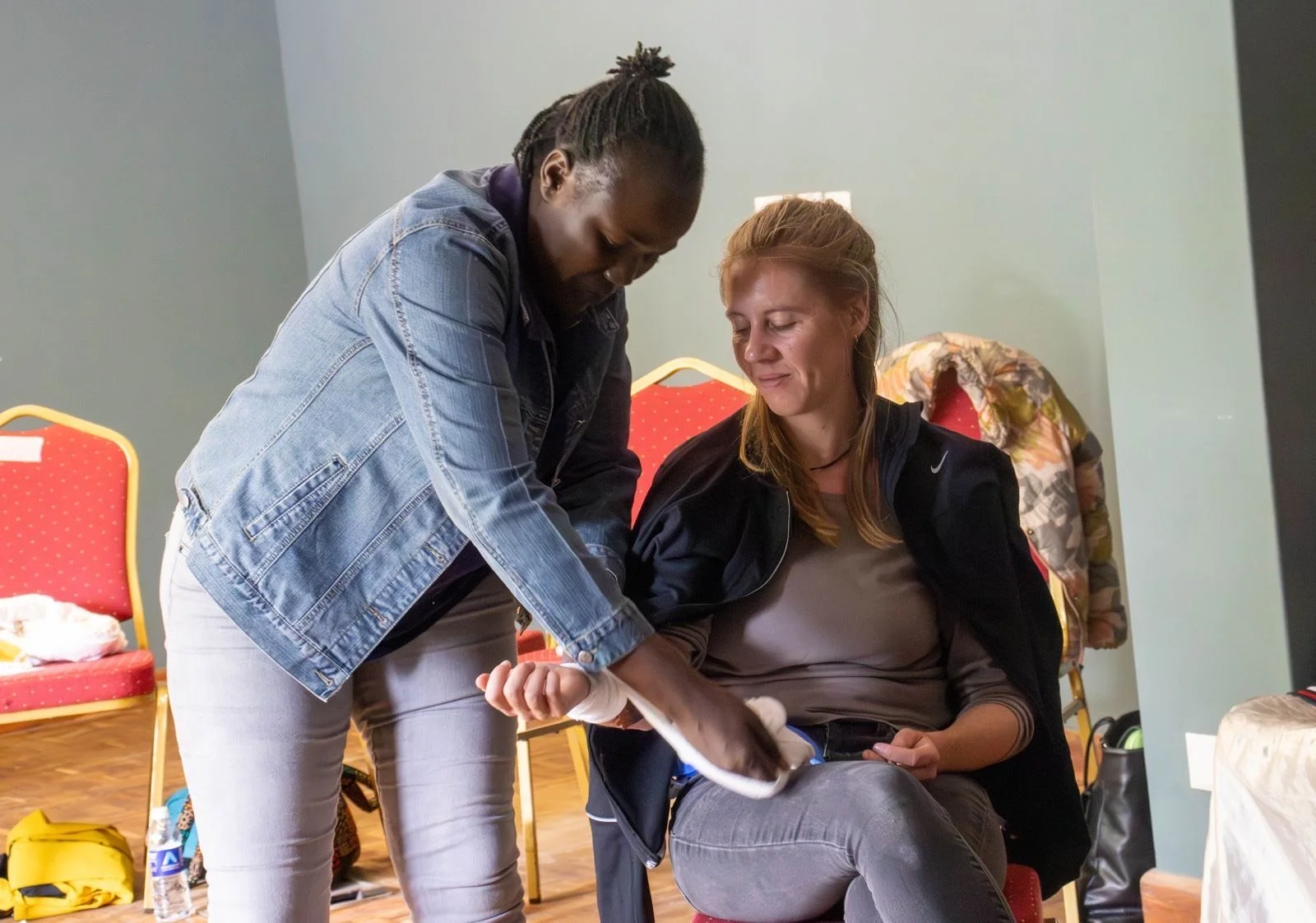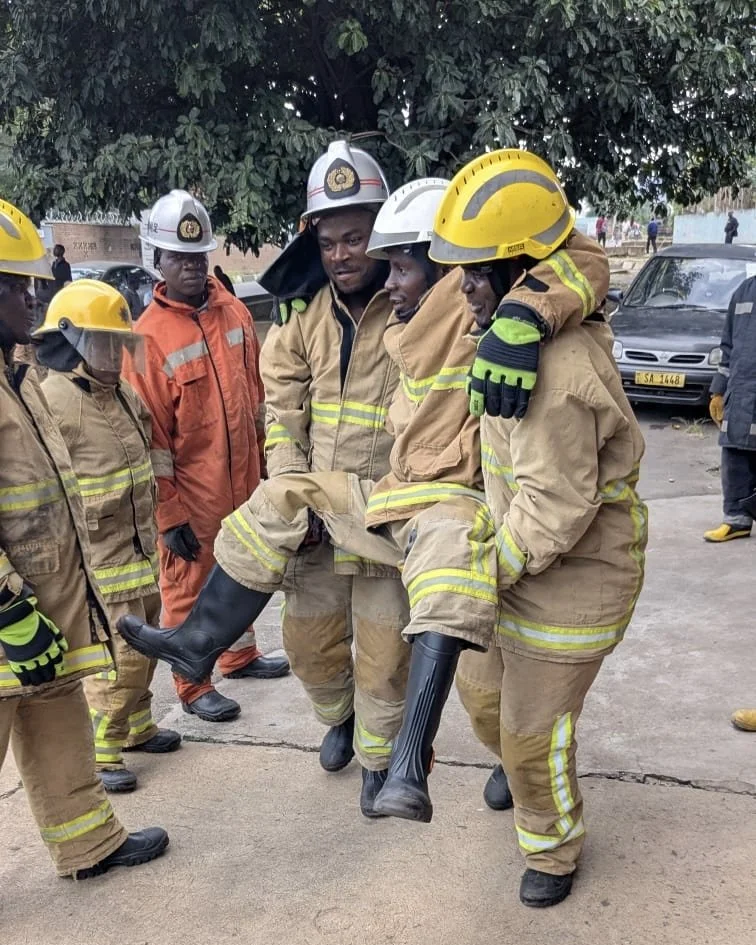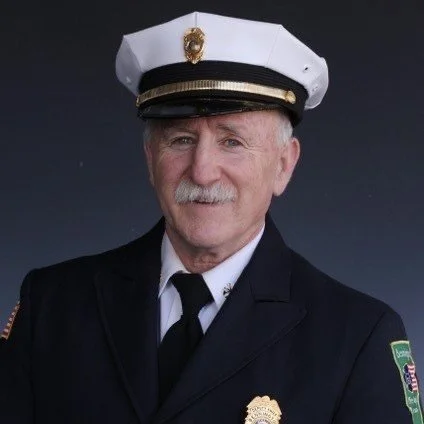by Howard Cohen
Not all firefighters are emergency medical technicians or paramedics, but we often serve as the first responders at scenes requiring life-saving first aid. Therefore, it is vital for all firefighters to possess at least a basic understanding of first aid. This short article aims to outline foundational principles for addressing trauma in situations where immediate life-saving medical assistance is needed. This article should not be seen as comprehensive first aid training. Nevertheless, with the basic and limited information provided here, and without any formal training, you may still have the opportunity to save someone’s life.
Scene Survey: The First Task
Size up: Regardless of your level of technical first aid training or medical knowledge, your first task when responding to an incident involving injuries is to gather as much information as possible about the situation. This is achieved through a thorough size up. It is crucial to assess the risks and dangers before rushing in to provide aid. Ask yourself, “What is trying to kill or harm me?” Is it traffic, wildlife, fire, an unstable building, falling objects, or floodwaters? You do not want to become another casualty or cause further harm to the patient.
Number of patients: Once you’ve ensured the scene is safe and stable, it’s time to determine how many individuals are involved in the incident. It’s easy to focus on patients who are crying out in pain and overlook those who are unconscious or not visible. Additionally, it can be tempting to rush to assist a person whose injuries seem more life-threatening than they actually are, such as someone bleeding from a superficial head injury, while another individual nearby has stopped breathing.
Primary Survey: The Second Task
The primary survey is an assessment of the three essential life-supporting functions: the respiratory, circulatory, and nervous systems, often called the ABCDs. Any problems related to these systems present an immediate risk to the patient's life and must be addressed without delay.
ABCDs: Once the size-up is completed, the scene is safe (or as safe as you can make it), and you have a sense of the number of patients needing aid, initiate a primary survey of the patients by checking the status of the three conditions that represent an immediate threat to life.
Airway: Check to make sure that the mouth and airway are cleared and that air is actually going in and out.
Blood is circulating: Ensure that blood is not spilling out and that it is actively circulating.
Disabled: Check whether the spine is stable and the central nervous system is functioning normally. Due to the limited scope of this article, I will not discuss further injuries related to the head, neck, or spine.
Active Bleeding Control Instructor checks the pulse and applies bandages to a patient.
Basic Life Support (BLS)
Basic life support (BLS) is the immediate treatment of one of the three life-threatening emergencies found during your primary survey. Its purpose is to provide temporary support to keep the patient alive while a secondary survey is conducted and/or until advanced treatment is available.
The simplest way to begin a primary survey is to ask the patient, “How are you?” If he answers, you know that his airway is not obstructed (A), his heart is beating (B & C), and his brain is functioning (D). If the patient does not respond or responds in an unusual way, you will need to look more closely.
Airway:
Airway problems result from an obstruction to the pharynx or larynx, which can be complete or partial. A complete obstruction is rapidly fatal, but it can be effectively and dramatically treated by clearing the airway. There are various ways an airway can become obstructed, such as vomit, a foreign object, swelling caused by trauma, an irritant, or an allergic reaction. It is imperative that you clear the airway, but you must do so without causing any additional harm to the patient.
Breathing:
A person can have an open airway yet still experience difficulty breathing. This may result from an injury to the brain, spinal cord, or diaphragm. The method for assisting a patient with breathing when more advanced medical care is unavailable is known as positive pressure ventilation or artificial respiration (mouth-to-mouth). The inflation rate should be around 12 breaths per minute or one every 5 seconds, with each breath lasting about 1 to 1.5 seconds. Rapid breaths can push air into the stomach, potentially leading to vomiting.
Bleeding & Circulation:
Uninterrupted blood circulation is essential for survival. There are two primary types of disruptions to blood circulation that a first responder can address: cardiac arrest and bleeding. Cardiac arrest occurs when the heart stops beating. During your primary survey, if you discover that the patient has no pulse, it indicates that her heart has stopped beating, and she is in cardiac arrest. It's important to note that in adverse situations, or if the patient is in shock, finding a pulse can be challenging. The carotid pulse is the strongest and easiest to access; it is located on either side of the larynx in the neck. If there is no carotid pulse, the heart is not beating. CPR (cardiopulmonary resuscitation) is the only treatment for cardiac arrest. Even with hands-on training, it has limited potential to restore and sustain life.
The second type of disruption to circulation results from significant blood loss. Controlling blood loss is essential as part of BLS. Bleeding can be internal, which is often difficult to identify and stop, or external, though it may not always be obvious. Addressing internal bleeding goes beyond the scope of this article and the capabilities of most first responders in the field. External bleeding is managed by applying direct pressure to the bleeding site with your hand, ideally using a cloth or bandage. This application is not intended to absorb the blood; instead, it provides uniform pressure across the wound. Prepare to maintain direct pressure for ten minutes or more. If the bleeding does not stop, remove the bandage to locate the source of the blood and then reposition your hand.
There is no easy rule for determining when bleeding is severe. A rule of thumb is that if it looks like a lot of blood, it probably is. However, severe bleeding can be missed if the patient is wearing a lot of clothing or the blood is absorbed into the ground around the patient.
Conclusion:
Firefighters practice safely transporting an injured person.
When developing first aid skills, like all skills a firefighter must master, training and practice are essential. Additionally, reading about the principles and theories that support these skills is important. However, there is no substitute for training and practice.
For more information, visit the following references:
Africa Fire Mission Active Bleeding Control Resources
The Outward Bound Wilderness First-Aid Handbook; Jeff Isaac & Peter Goth.
The Field Guide of Wilderness & Rescue Medicine; Jim Morrissey & David Johnson.
Opening an Unconscious Patient’s Airway with a Manual Manipulation
Howard A. Cohen was a volunteer firefighter for 20 years. He began his firefighting career as a chaplain and retired as the deputy chief. He is currently AFM’s online program content director. He frequently presents for the Weekly Virtual Firefighter Trainings and contributes to the AFM blog.



